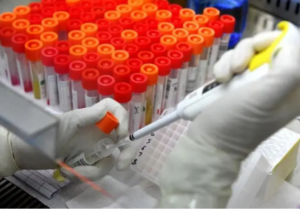
Note that the new crown does not only cause pneumonia, the risk of autoimmune system diseases should not be ignored
Ms. Ho was also positive at the peak of the first wave of New Crown infections, but she was grateful that her symptoms were mild, with only a low-grade fever and sore throat that lasted for a day, and then she felt nothing. But the new crown infection was far from as simple as she thought.
Soon after, Ms. He attended a unit physical examination, but on the same day the hospital called to inform her that two indicators were abnormally high and she had to come to the hospital immediately!
When Ms. He came to the hospital with anxiety, the doctor told her that one was a blood sedimentation level of 120, and the other was a C-reactive protein of 155, both of which were seriously over the limit! Both of these are acute inflammatory response indicators, and the outpatient doctor immediately arranged for her to be hospitalized.
After the hospitalization, a comprehensive examination was done, but there were no signs of viral pneumonia such as the so-called “white lung”, Ms. He’s body temperature has been normal, and the screening for tuberculosis and tumors were negative, so where did the inflammation come from?
After expert consultation, it was clear that she had “vasculitis”, a metabolic disease that can be secondary to viral infections, but only recently discovered as a result of new coronavirus infections. The patient may have fever, malaise and multisystem symptoms. In addition she has high D-2 aggregates, indicating microthrombosis.
After the doctor gave Ms. He the hormone methylprednisolone tablets, her condition quickly resolved, and her sedimentation, CRP, and ferritin all dropped significantly, and she was discharged in time for the Chinese New Year. The doctor said she was lucky to find it early, otherwise the disease would have progressed and multi-system damage such as hematuria, proteinuria, arthralgia, and even pulmonary embolism would have been possible!
Risk of autoimmune disease skyrockets after new crown infection
A recently published foreign study invented investigated the association between neo-coronavirus and autoimmune diseases.

The results found that more than 6,400 of the 641,407 people infected with Neocon developed various autoimmune diseases. Of those with pre-existing autoimmunity, 1,744 developed another autoimmune disease, most of whom were women between the ages of 18 and 64. This far exceeded the control group.
Among the most common autoimmune diseases were Hashimoto’s thyroiditis, Graves’ disease, psoriasis, rheumatoid arthritis, and dry syndrome. Wegener’s disease, white stuffy syndrome, nodular disease, and temporal arteritis had the highest incidence.
The risk of autoimmune disease is higher within 3 to 15 months after a new coronary infection.

Mechanisms of immune abnormalities
Researchers have found that NIV can induce dysregulation of the immune system, resulting in a hyperinflammatory state with high levels of immune proteins such as IL-6 and TNF-alpha, and in severe cases, an “inflammatory storm” that can lead to critical conditions such as ARDS, commonly referred to as “white lung”. The “inflammatory storm” triggered by severe cases can lead to critical conditions such as ARDS, commonly known as “white lung. However, in another group of patients with new coronary artery disease, there is also an intense immune response that is damaging the body, leading to blood clots and metabolic reactions.
Studies have shown that the immune response in the elderly or in patients exposed to large numbers of viruses may lag, allowing the virus to continue to multiply. The stimulation of massive production of multiple cytokines predisposes to systemic inflammation and dysregulation of the immune system.

Significant increase in clinically observed cases
In particular, in the Yang Health Clinic, patients complaining of headache, insomnia, hypothermia, and arthralgia have been diagnosed with vasculitis, temporal arteritis, rheumatoid arthritis, and subacute thyroiditis, with a high percentage of elderly people and women.
On the contrary, the number of incidences is rather low among people with previous immune system, because in the long-term use of hormones, immunosuppressants, etc.
Be alert to autoimmune diseases with these symptoms
Studies have shown that a significant proportion of patients with the so-called “new crown sequelae” suffer from autoimmune system diseases.
The following symptoms should be alerted and promptly checked.
Unexplained elevation of blood sedimentation, C-reactive protein and ferritin, which are all acute chronological reactive proteins and can be triggered by various inflammatory conditions in the body.
Headache, insomnia and neurological symptoms.
Skin rash, joint pain.
Recurrent low-grade fever.
Enlarged lymph nodes.
Enlarged thyroid gland and abnormal thyroid function.


Average Rating